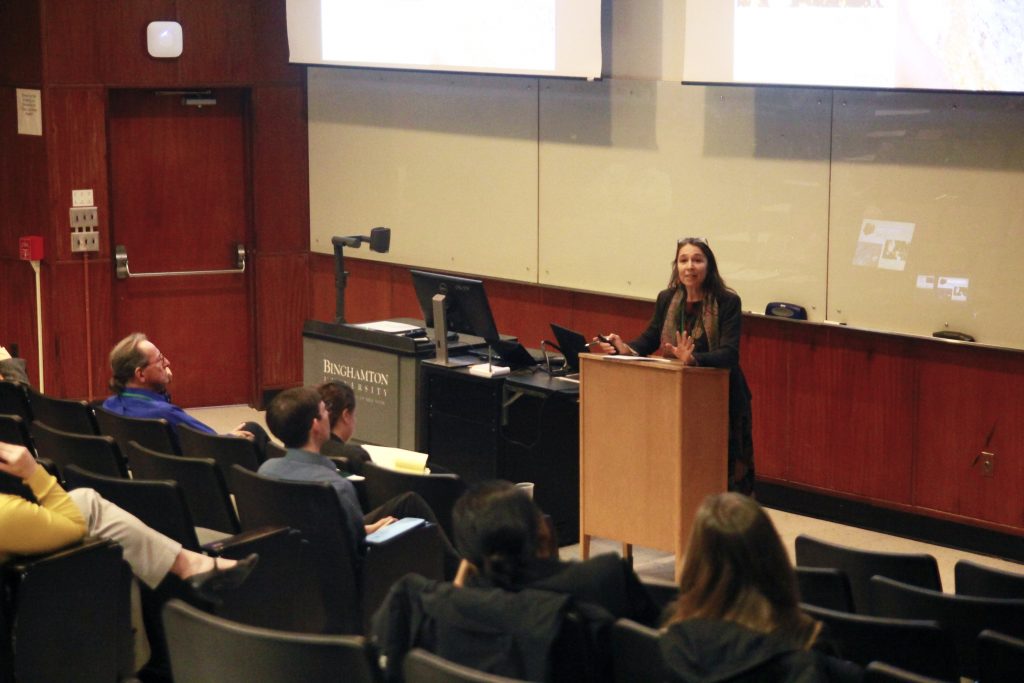
Archaeologists from around the world came to Binghamton University this weekend to present and listen to researchers discuss their work in South America.
The 37th annual Northeast Conference on Andean and Amazonian Archaeology and Ethnohistory hosted researchers from BU, San Cristóbal of Huamanga National University in Peru, Yale University, the University of Toronto and others. All of the presentations, including both lectures and posters, were based on recent archaeological research done in the Andean and Amazonian regions of South America.
It’s been 20 years since the event, which is hosted at a different school each year, was held at BU. The conference was co-organized by BrieAnna Langlie, assistant professor of anthropology, and William Isbell, distinguished professor emeritus of archeology. Langlie said the conference was her first time hosting a major research event as lead Andean archeologist at BU. According to Langlie, the conference not only brings researchers to BU, but also allows graduate and undergraduate students to learn from them.
“[Hosting] brings world-class researchers to Binghamton University for students to see research and to experience what it feels like to be an archaeologist by traveling with them to their field sites through their powerpoint lectures,” Langlie said. “It also gives us a platform to show international scholars what Binghamton has to offer.”
The keynote speaker, Sergio Chávez, a professor from Central Michigan University, spoke on his research of the Copacabana Peninsula in Bolivia. Chàvez said he attended this conference because of the proliferation of Andean research being done on the east coast of the United States.
“There is far more archaeologists specializing in the Andes here on the eastern side,” Chávez said. “The big museums are here, like the Smithsonian has an art collection from the Andes.”
Starting on Friday evening with a meet and greet in Downtown Binghamton, the conference also held several informal events. There was a dinner Saturday night, hosted by Isbell at his house, and a barbecue Sunday afternoon hosted by Langlie. These events, according to Langlie, are a product of the close relationships that often develop between researchers in the field.
“These conferences in general are so wonderful because it is a chance for us not only to see cutting-edge research, but [also to] get together with our colleagues, which are actually friends,” Langlie said. “We lived together in the field in South America, and so it actually feels like a big reunion as well when everyone comes together from near and far.”
Zachary Critchley, a fifth-year graduate student at BU, presented on historical animal trade between towns in the Andes. Critchley wrote in an email that he presented to gain feedback from other scientists.
“The Northeast Andean conference is a lot of fun because Andeanists are a relatively tight and small community of archaeologists,” Critchley wrote. “It’s a project I’m trying to develop into a dissertation, so presenting it to my colleagues will hopefully be a big help in developing it and really nailing it down.”
Isbell said one of the best parts of the conference was the involvement of undergraduate and graduate students.
“One of the nicest things about the conference is that we’ve had so many young people, young scholars,” Isbell said. “I feel like this conference was very much related to the direction that our field is moving, rather than where it has been in the past.”
Next year, the conference is scheduled to be hosted at Brown University.


